HBF comes out of retirement
|
Aloha,
Ok, when HBF came out of retirement in Maryland, the countryside was pretty much flat. Now, climbing up and down dormant volcanos, I’m noticing my engine temperature climbing. I’ve done a radiator flush and perhaps that improved things a bit. There are some fins that have deteriorated from the rows on the radiator. And, before the HBF took the retirement hiatus, I am pretty sure I replaced the water pump, hoses and the thermostat (and radiator too). There are no signs of a failing water pump these days. It was pointed out to me that my upper radiator hose might have an air pocket. It’s a Motorcraft 1287 equivalent which is the hose for the 4.9L with AC. The course of the hose goes above the radiator inlet and has the potential to create a bubble. HBF doesn’t have AC so could run with the MC1122. At the local parts stores, it seems that the replacement hose in the computers is the MC1287 which has the curve that is above the radiator and would be the high point. Has anyone noticed a change in engine cooling between these two hoses? And, if this was an issue, I suspect folks with AC’s would have brought this up? Thoughts?!?
1984 F-150 2wd short bed with 4.9L, 4 speed overdrive manual transmission, and 3.08 rear end (18) switched to the 3.55 limited slip (H9).
|
|
This post was updated on .
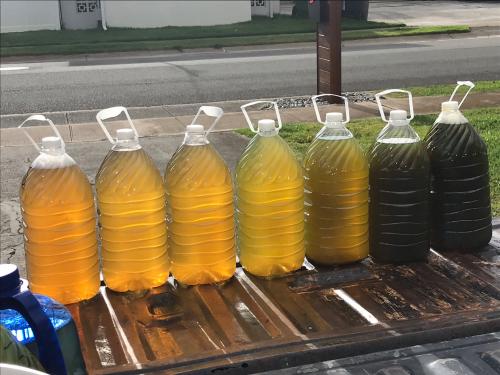 Flushing with multiple rounds of distilled water and flushing compound (starting with driver’s side/right side of photo.) I burped the upper radiator hose after doing this flush. But, perhaps a new one builds up periodically?
1984 F-150 2wd short bed with 4.9L, 4 speed overdrive manual transmission, and 3.08 rear end (18) switched to the 3.55 limited slip (H9).
|
|
Administrator
|
A bubble in the radiator hose (above the radiator level) won't be a concern with the thermostat open.
I can't speak specifically about a 300-6 with AC I wouldn't bother with distilled water for flushing either. It won't be in there long enough to cause scale. But I'm not sure of what "flushing compound" you're using, or why they might even suggest using distilled. Definitely use distilled water for your final fill if you don't buy pre-diluted coolant. It does look like you had some nasty sludge in the system! 😝 With a new water pump, thermostat and hoses the only thing that concerns me is the corroded radiator fins. (and possibly lack of a spring in the lower hose) Oxides are generally very good insulators. So visible corrosion would have me checking temps at the radiator outlet and a few spots of the core with a non-contact IR thermometer.
Jim,
Lil'Red is a '87 F250 HD, 4.10's, 1356 4x4, Zf-5, 3G, PMGR, Saginaw PS, desmogged with a Holley 80508 and Performer intake. Too much other stuff to mention. |
|
Thank you! I’ll try to find an IR thermometer!
1984 F-150 2wd short bed with 4.9L, 4 speed overdrive manual transmission, and 3.08 rear end (18) switched to the 3.55 limited slip (H9).
|
|
Well, the brake light on the dashboard comes on most mornings and goes off after a few miles…
The brake booster hisses and the master cylinder isn’t the original one but it’s pretty old. Replace both? Replace the vacuum tube going to the brake booster? Enjoy the hisses and just change the master cylinder? Whack the master cylinder and see if the light goes off? Seriously, to what extent would a poor vacuum in the brake booster influence the valve in the master cylinder that triggers the dashboard brake light?
1984 F-150 2wd short bed with 4.9L, 4 speed overdrive manual transmission, and 3.08 rear end (18) switched to the 3.55 limited slip (H9).
|
|
Administrator
|
There is no level switch in the master cylinder.
There is a switch in the proportioning valve, and there should be a switch on the parking brake pedal in '84. It's time to see which reservoir is empty and inspect the brake lines for that axle (front is rear and the rear is for the front brakes) If you hear hissing up under the dash it's safe to assume the diaphragm in the booster is gone. Sometimes this is because the master cylinder leaks out the back into the booster and brake fluid eats the rubber. I would examine the vacuum check valve that attaches to the booster. See if it's wet, and if it still holds pressure. If you can get a pre-adjusted assembly (booster & master together) that may be the way to go.
Jim,
Lil'Red is a '87 F250 HD, 4.10's, 1356 4x4, Zf-5, 3G, PMGR, Saginaw PS, desmogged with a Holley 80508 and Performer intake. Too much other stuff to mention. |
|
Aloha ALCON,
Well, the brake light/warning light seemed to have fixed itself for the time being! But, about a week ago, HBF seemed to be running like it was starved for fuel. I had put a inline fuel filter in a couple years back when HBF came out of retirement and never was able to undo the fuel filter at the carburetor. Well, this weekend, I took another crack at it and was able to remove it. 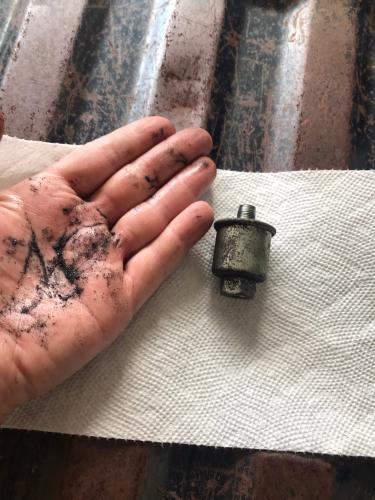
1984 F-150 2wd short bed with 4.9L, 4 speed overdrive manual transmission, and 3.08 rear end (18) switched to the 3.55 limited slip (H9).
|
|
And now, HBF seems to run a lot better. Also, I tightened down the carb, did a seafoam “upper engine treatment”, and replaced the stretch of fuel line from the frame to the mechanical fuel pump.
Afterwards, I noticed this on the wall of the garage: 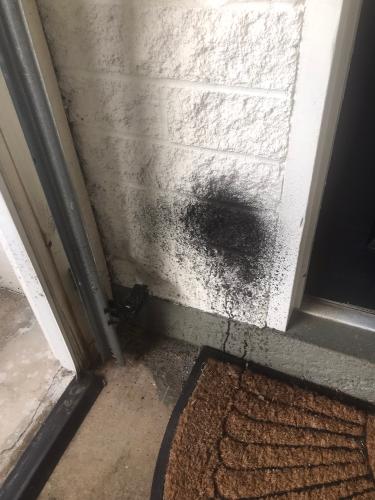 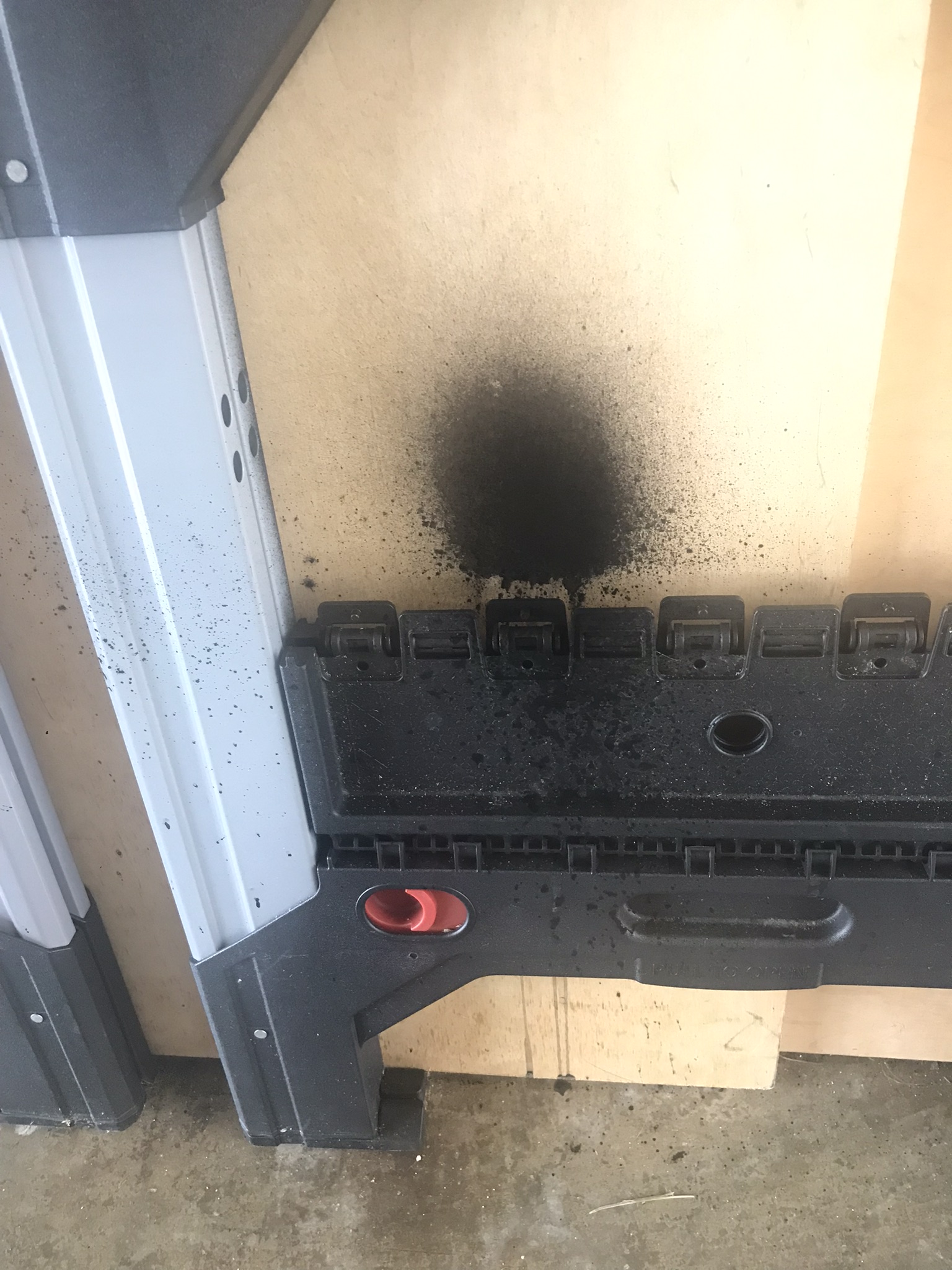
1984 F-150 2wd short bed with 4.9L, 4 speed overdrive manual transmission, and 3.08 rear end (18) switched to the 3.55 limited slip (H9).
|
|
At first, I thought it could be the carbon from the treatment and tightening the carb (I shifted it around a bit.). But, then I noticed the second spot on the wall and then again, this morning, I put my hand next to the exhaust and got a handful of carbon.
So, not really sure how long this has been going on because I don’t often park HBF in the garage. It probably has been 3 months since the tail pipe was parked against a wall. Thoughts? The engine felt like it was starving for fuel last week so I don’t think this a rich fuel mixture issue. And, that would be consistent with the fuel filter. Some internet reading points to a problem under the valve cover. The dipstick is down about a pint of oil. Anyhow, curious what the brain trust thinks!!!
1984 F-150 2wd short bed with 4.9L, 4 speed overdrive manual transmission, and 3.08 rear end (18) switched to the 3.55 limited slip (H9).
|
|
Administrator
|
That would be an awfully rich mix to create that, and you said it is running well so I seriously doubt it is rich.
So that means it is oil, and I'd guess that the Sea Foam is loosening things up and oil is getting by the seals and rings. Sea Foam is thin stuff and it may be what is getting by the seals, but it should also soften the seals. However, the rings won't really benefit from it. So I'd run it the prescribed time and then change the oil and filter. It may go back to smokeless operation when the SF is gone.
Gary, AKA "Gary fellow": Profile
Dad's: '81 F150 Ranger XLT 4x4: Down for restomod: Full-roller "stroked 351M" w/Trick Flow heads & intake, EEC-V SEFI/E4OD/3.50 gears w/Kevlar clutches
|
|
Ok. So, I’m starting to get a handle on the soot issue. But, I is still there at times.
1) The idle mixture screw on the carb was really backed off. I eventually pulled it out, soaked it in carb cleaner, and I have reset it at 1 turn counterclockwise from where it seats into the carb. 2) The PCV valve plastic doohickey had cracked and I replaced that this morning. It was causing a vacuum leak for sure. I’d hear the engine whistle when driving at idle and disappear when accelerating. 3) I changed the oil yesterday and it was pretty black but it could have been from the sea foam upper engine treatment. 4) The coolant was about 4 inches down from the neck of the cap and because there had been some white smoke (mixed in with the carbon chunks), I just completed a “combustion leak detector” test and it doesn’t look like I have a head gasket issue. 5) I did a smoke test yesterday and the PCV valve leaked (now replaced). Smoke came out of the carb, which seems appropriate. And, smoke came out of the EGR. Would smoke come out of the EGR with the engine at rest? Does the diaphragm hang out in some neutral zone when the engine isn’t running? Or, maybe time to replace it? I picked up a rebuild kit for the carb. But, haven’t tackled that yet. Not sure that’s a great idea. Sometimes the enemy of good is better, as my fiancé reminds me every now and then. Thoughts?!?
1984 F-150 2wd short bed with 4.9L, 4 speed overdrive manual transmission, and 3.08 rear end (18) switched to the 3.55 limited slip (H9).
|
|
Administrator
|
EGR should seal, unless vacuum applied through the usual combination of thermal and modulating switches/valves/solenoids. (whichever your 4.9 uses)
If it is off seat that would definitely cause running problems, especially at idle. Where is the smoke coming out? Do you have the EGR vacuum line disconnected? Are you sure it isn't coming from the carburetor base screws being loose? I'm not sure what the base position is for the idle screw in a YFA but you should probably reset for highest vacuum at appropriate curb idle speed after checking for proper advance as outlined on the radiator support sticker. The YFA is perhaps the most basic carb found in this era. I wouldn't be afraid of going through it, cleaning jets and setting float height, etc.. If the steam you see in your exhaust doesn't smell sweet (like antifreeze) then it's probably just condensation evaporating out of the exhaust system. I definitely would wonder why my coolant was so low though..
Jim,
Lil'Red is a '87 F250 HD, 4.10's, 1356 4x4, Zf-5, 3G, PMGR, Saginaw PS, desmogged with a Holley 80508 and Performer intake. Too much other stuff to mention. |
|
Thanks Jim!
I am pretty sure the smoke is not coming from the base screws and I recently tightened them during these changes in performance. I’ll try to remove the EGR valve this weekend. Getting a new valve will take about a week (after checking at Napa and O’Reilly’s… the woes of island life.) My sense of smell is pretty bad and can barely smell gasoline when sticking my nose in a gas can. My fiancé might let me borrow her nose to assist after these most recent changes (after the new PCV valve). She couldn’t really describe it aside from “really bad”. But, maybe now, the smell will be more refined after the work. I’ve always been curious about the settings and how to navigate them…Happy Blue Ford doesn’t have a tachometer. What do folks use in a situation like this? I’ve seen little RPM meters for chainsaws. Do they make something similar for vehicle engines?
1984 F-150 2wd short bed with 4.9L, 4 speed overdrive manual transmission, and 3.08 rear end (18) switched to the 3.55 limited slip (H9).
|
|
Administrator
|
I have one of those 2-stroke tachometers.
 I would say for an automobile you're probably best off with a timing light that has tach function, since you need a timing light to set your distributor anyhow.
Jim,
Lil'Red is a '87 F250 HD, 4.10's, 1356 4x4, Zf-5, 3G, PMGR, Saginaw PS, desmogged with a Holley 80508 and Performer intake. Too much other stuff to mention. |
|
Thanks for the guidance and encouragement!
Ok, so today I pulled the EGR valve: 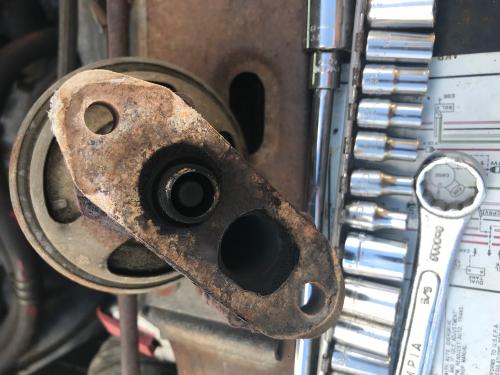 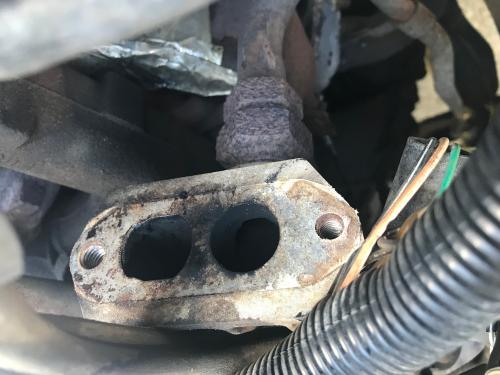 When I pull the diaphragm back and put my finger over the suction tube, it doesn’t stay up. Some internet folks say this is a sign of a bad valve. And, I can’t seem to locate a vacuum gauge/pump at the local parts store. A new EGR could be here on Wednesday (flown from the mainland.) Think it might be the cause of the chugging, knocking, and possibly contributing to the black soot issue?!? Thanks in advance to all those with guidance!!!
1984 F-150 2wd short bed with 4.9L, 4 speed overdrive manual transmission, and 3.08 rear end (18) switched to the 3.55 limited slip (H9).
|
|
Administrator
|
You can test the valve with a piece of vacuum hose. Put the hose on the valve, suck on the hose, and then put your tongue over the end of the hose. If the valve is good it'll stay open for a long time. A bad valve will close pretty quickly as the vacuum leaks off.
Gary, AKA "Gary fellow": Profile
Dad's: '81 F150 Ranger XLT 4x4: Down for restomod: Full-roller "stroked 351M" w/Trick Flow heads & intake, EEC-V SEFI/E4OD/3.50 gears w/Kevlar clutches
|
|
Thank you!
I did something similar. I took a length of clear vinyl tubing (blue tint colored and rated for gas so sturdy enough it didn’t collapse) and secured it to the vacuum port with a hose clamp. Then, I took my vacuum cleaner, attached the attachment to clean corners, stuck the tune in that, covered all the extra air spots with my hand, and turned on the vacuum. The diaphragm didn’t budge. But, an actual vacuum gauge/pump handle tool thingy isn’t readily available to use. Think my “vacuum test” sufficed to determine the EGR is bad?!?
1984 F-150 2wd short bed with 4.9L, 4 speed overdrive manual transmission, and 3.08 rear end (18) switched to the 3.55 limited slip (H9).
|
|
And just tried your method, Gary. I am not able to create a vacuum. The diaphragm doesn’t move. When I manually push the diaphragm to the “open position” the diaphragm collapses back down to the “closed” position immediately without generating any vacuum. Guess it must be worn out. Probably the original EGR but maybe I replaced it with factory OEM at one point, like when my friend and I rebuilt the carb.
1984 F-150 2wd short bed with 4.9L, 4 speed overdrive manual transmission, and 3.08 rear end (18) switched to the 3.55 limited slip (H9).
|
|
Administrator
|
Yes, it appears the EGR valve's vacuum diaphragm is shot.
Gary, AKA "Gary fellow": Profile
Dad's: '81 F150 Ranger XLT 4x4: Down for restomod: Full-roller "stroked 351M" w/Trick Flow heads & intake, EEC-V SEFI/E4OD/3.50 gears w/Kevlar clutches
|
|
Well, while awaiting the EGR valve, I thought maybe I could tackle the carburetor. Well, it came apart well enough and maybe the accelerator pump diaphragm was torn. The rubber was worn and there was a little crack in it. There were four rubber grommets on the link pump lifter that pretty much disintegrated. Having put it all back together, it seems that the throttle plate doesn't close in the throttle bore and the accelerator and idle setting screws are too far away to reach the idle cam. It seems like the throttle sensor assembly causes this because I need to open up the throttle plate to bolt the throttle sensor assembly in.
1) Is this normal? When I install the carburetor and electricity to the throttle sensor assembly, will it adjust the throttle plate and in turn the accelerator/idle setting screws? 2) I am not sure I did the metering rod adjustment correctly, and perhaps that is causing the throttle plate and accelerator/idle screws to be askew? Should I open it back up and try readjusting the metering rod? Videos online didn't help too much but now that I have re-read the literature on the YFA carb on this site, it makes a little bit more sense on how to do it. And, when setting the electric choke, I stripped one of the machine screws (all three holes had screws as opposed to two having rivets.) So, in general, I am happy I tried to rebuild the carb but I'm not sure I was successful... Just curious if I should slap it on and see if it works or redo a few items first. Thoughts?
1984 F-150 2wd short bed with 4.9L, 4 speed overdrive manual transmission, and 3.08 rear end (18) switched to the 3.55 limited slip (H9).
|
| Edit this page |

